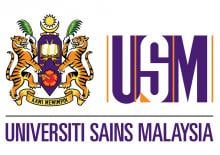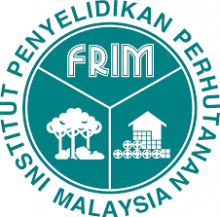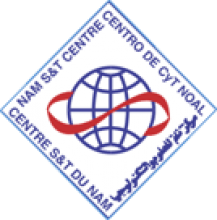Science
News

25 Oct 2006
Nuclear forensics, Global cooling preceded life on Earth, DNA degradation link to rheumatoid arthritis, Lampreys, the supreme survival specialists, The conductivity of mantle minerals, Largest avian skull runs rings around agility theory

22 Oct 2006
Summaries of other newsworthy papers from Nature include Inducing connections between brain sites alters motor function - Nature, The bottom line for silk - Nature Materials, Bittersweet news for neural stem cell grafts - Nature Medicine, TAPping into mammalian interaction proteomics - Nature Methods

20 Oct 2006
People around the world can access information about harmful introduced species easier than ever thanks to the September 2006 launch of a new website for the Global Invasive Species Database (GISD).

19 Oct 2006
This innovation offers versatility and is applicable on virtually all types of materials regardless of it nature or origin such as semi-metals like silicon, silicates, glasses, ceramics as well as non-metals like plastics, woods and shells.

19 Oct 2006
The culture conditions under which human embryonic stem cells can be converted into cells that produce all five hormones made by the pancreas, including insulin, are reported online in Nature Biotechnology this week.

18 Oct 2006
Science issues could play a key role in the US mid-term elections, says a news feature in this week’s Nature. Reporters have teamed up to scrutinize races across the country and report how two topics in particular – stem cells and energy – are being used on the campaign trail.

18 Oct 2006
‘Linguistics’ spawns new antimicrobial drugs, Stop picking on the big guys, Moon's south pole unlikely to have thick ice deposits, Bang on in the Andromeda galaxy, Cancer stem cells resist radiotherapy, Primitive fish surprisingly advanced, Neurodegeneration, Two pores colliding, Getting to the roots of the fungal family tree.......

18 Oct 2006
The Asia Pacific Conference on Plant Tissue Culture and Agribiotechnology (APaCPA) 2007 will be a comprehensive professional platform to promote research in all aspects of basic and applied biotechnology, especially in the areas of plant tissue culture and agribiotechnology.

16 Oct 2006
Their expertise include Bamboo Management, Silviculture, Non-Wood Forest Produce Furniture, Mangrove, Forestry, Tissue Culture Horticulture, Seed Science, Microbiology Pharmaceutical, Drug Discovery, Natural Products Chemistry, Herbal Product Essential Oils, Wood Composite, Biomass Utilisation, Manufacturing Mechanisation and Automation

15 Oct 2006
LONDON – The International Journal of Surgery proudly announces the launch of its new open access website www.theijs.com.

15 Oct 2006
Summaries of newsworthy papers from Nature Journals include New sex determination gene identified - Nature Genetics, Towards better anti-epileptic drugs - Nature Neuroscience, We have no blue bananas - Nature Neuroscience

12 Oct 2006
The International Center for Agricultural Research in the Dry Areas (ICARDA) is seeking an Executive Assistant to the Director General, who will be reporting to the Director General (DG), as well as the Board Chair on matters related to the Board of Trustees.

12 Oct 2006
The International Center for Agricultural Research in the Dry Areas (ICARDA) has an immediate vacancy for the position of an Agricultural Policy Specialist (P-level). The post holder will be based at ICARDA’s headquarters in Aleppo, Syria.

11 Oct 2006
Vaccinating the Ethiopian wolf, Titan's ocean lost forever?, Oxygen puzzle solved?, Modelling the early Universe, Controlling the insulin-degrading enzyme may relieve Alzheimer’s disease, Towards a quantum network and finally… Salamanders see red

09 Oct 2006
Los Baños, Philippines – The International Rice Research Institute (IRRI) continues to repair extensive damage caused last Thursday (September 28) by the worst typhoon in more than a decade to hit the world-famous agricultural research center.

09 Oct 2006
New Delhi, India – More income for the world’s millions of poor rice farmers and consumers is the first goal of a major new revamp to the agenda of the International Rice Research Institute (IRRI) – the largest and most successful international agricultural research institute in Asia.

04 Oct 2006
The electronic nose is an array of gas sensors which measure the frequency changes of volatile vapors on its surfaces. The 'electronic tongue' consists of lipid polymer membrane electrodes (to mimic human tongue) for the analysis of liquid samples.

04 Oct 2006
Summaries of newsworthy papers from Nature include Quantum physics: Quantum teleportation between light and matter, Geology: How does the Earth recycle? and finally… Whiskers bristle with news

04 Oct 2006
The last thing most people want in their computer's memory is a virus. But now a team of scientists has used a virus to make a memory device, according to research in this month's Nature Nanotechnology.

03 Oct 2006
International conference on S&T Policy Research and Statistics, International Roundtable on Lessons from Natural Disasters, Policy Issues and Mitigation Strategies, International Roundtable on Lightning Protection, International workshop on Medicinal Plants and Herbal Medicine

01 Oct 2006
A molecule that makes mammals feel full up has been identified, and drugs that target it may help to treat obesity. Other newsworthy papers include Vision: Bug eyes get a makeover - Nature, One step toward more efficient cloning - Nature Genetics, New strategy for controlling inflammation - Nature Immunology

01 Oct 2006
Abstract submission deadline is October 15, 2006. The conference will be held at the Islamic University of Gaza (IUG) from 18-19 June 2007. It will focus on important engineering issues relevant to construction and development, which will stimulate construction efforts and development.

29 Sep 2006
Recommendations published in the October issue of Nature Clinical Practice Gastroenterology & Hepatology should help physicians to identify quickly whether or not a patient is suitable for treatment with nonsteroidal anti-inflammatory drugs (NSAIDs).

28 Sep 2006
Dust mites produce an allergen that disrupts the skin’s ability to act as a barrier to other allergens and environmental irritants according to research published this week in the Journal of Investigative Dermatology.

27 Sep 2006
The East Mediterranean region is part of the Middle East and North Africa region (MENA), which is recognized as one of the driest and most water scarce regions in the world. This paper described the roots of water conflict over the shared water resources particularly in Turkey, Iraq, Syria, Lebanon, Jordan, Palestine and Israel.

27 Sep 2006
Methane on the rise?, 1918 influenza virus triggered exaggerated immune response, Malaria riddle explained, Massive stars require gas doughnuts, Extremophile’s extreme repair job, Solid turns into bizarre state of matter, Hot condensation and Silk spun by tarantula feet

26 Sep 2006
Three new papers from Indian Journals tell us about the best time to harvest for herbal drug purposes, zinc recovery from polluted waters and the occurrence of Shiga toxigenic Escherichia coli in livestock and poultry in north-eastern India

26 Sep 2006
A special focus issue on childhood developmental disorders, including specific language impairment and dyslexia, autism, and the mental retardation syndrome fragile X, is presented in the October issue of Nature Neuroscience. Four articles explore current knowledge about these disorders and suggest avenues for future research.

24 Sep 2006
MINT’s R&D projects include decontamination of Cosmetics, Agrochemicals for Tropical Agriculture, Hydrogel, Bone Allograft, Study of Pesticides in Vegetables, Breeding of New Varieties of Bananas, developing new Radiopharmaceuticals and many more

24 Sep 2006
Cancer can be tackled with a combination of drug and genetic therapies, such that the effectiveness of the individual treatments are enhanced, as shown by Yi-Yan Yang and colleagues in the October issue of Nature Materials.
Giants in history
Chinese biochemist Chi Che Wang (1894 - 1979), one of the first Chinese women to study abroad, advanced to prominent research positions at American institutions including the University of Chicago and the Northwestern University Medical School.
Ruby Sakae Hirose (1904 – 1960) was a Japanese-American scientist whose research contributed significantly to our understanding of blood clotting, allergies and cancer.
Chinese electron microscopy specialist Li Fanghua (6 January 1932 – 24 January 2020) facilitated the high-resolution imaging of crystal structures by eliminating interference.
Sálim Moizuddin Abdul Ali (12 November 1896 – 20 June 1987), commonly referred to as the Birdman of India, was the first person to conduct systematic surveys of birds from across India.
Haisako Koyama (1916 – 1997) was a Japanese solar observer whose dedication to recording sunspots – cooler parts of the sun’s surface that appear dark – produced a sunspot record of historic importance.
Michiaki Takahashi (17 February 1928 – 16 December 2013) was a Japanese virologist who developed the first chickenpox vaccine.
Toshiko Yuasa (11 December 1909 – 1 February 1980) was the first Japanese female physicist whose research on radioactivity shed light on beta decay – the process in which an atom emits a beta particle (electron) and turns into a different element.
Angelita Castro Kelly (1942-2015) was the first female Mission Operations Manager (MOM) of NASA. She spearheaded and supervised the Earth Observing System missions during its developmental stage.
Malaysia’s first astrophysicist, Mazlan binti Othman (born 11 December 1951) was instrumental in launching the country’s first microsatellite, and in sending Malaysia’s first astronaut, Sheikh Muszaphar Shukor, into space.
Known as Mr. Natural Rubber, chemist and researcher B. C. Shekhar (17 November 1929 – 6 September 2006) introduced a number of technical innovations that helped put Malaysia’s natural rubber industry on the world map.
Shinichiro Tomonaga (31 March 1906 – 8 July 1979), together with Richard Feynman and Julian Schwinger, was awarded the Nobel Prize in Physics in 1965, for their contributions to advance the field of quantum electrodynamics. Tomonaga was also a strong proponent of peace, who actively campaigned against the proliferation of nuclear weapons and promoted the peaceful use of nuclear energy.
South Korean theoretical physicist Daniel Chonghan Hong (3 March 1956 – 6 July 2002) achieved fame in the public sphere through his research into the physics of popcorn.
Japanese chemist Kenichi Fukui (4 October 1918 – 9 January 1998) was the first Asian scientist to be awarded the Nobel Prize in Chemistry. Together with Roald Hoffman, he received this honour in 1981 for his independent research into the mechanisms of chemical reactions.
Chinese palaeontologist, archaeologist and anthropologist Pei Wenzhong (January 19, 1904 – September 18, 1982) is regarded as a founder of Chinese anthropology.
Physicist Narinder Singh Kapany (31 October 1926 – 4 December 2020) pioneered the use of optical fibres to transmit images, and founded several optical technology companies. Born in Punjab, India, he worked at a local optical instruments factory before moving to London for PhD studies at Imperial College. There, he devised a flexible fibrescope to convey images along bundles of glass fibres.
Japanese physicist Ukichiro Nakaya (1900-1962) made the world’s first artificial snowflakes. He started his research on snow crystals in the early 1930s at Hokkaido University, where there is an unlimited supply of natural snow in winter. By taking over 3,000 photographs, he established a classification of natural snow crystals and described their relationship with weather conditions.
The field of solid-state ionics originated in Europe, but Takehiko Takahashi of Nagoya University in Japan was the first to coin the term ‘solid ionics’ in 1967. ‘Solid-state ionics’ first appeared in 1971 in another of his papers, and was likely a play on ‘solid-state electronics’, another rapidly growing field at the time.
Charles Kuen Kao (Nov. 4, 1933 to Sept. 23, 2018) was an engineer who is regarded as the father of fibre optics. His work in the 1960s on long distance signal transmission using very pure glass fibres revolutionized telecommunications, enabling innovations such as the Internet.
Chika Kuroda (24 March 1884 – 8 November 1968) was a Japanese chemist whose research focussed on the structures of natural pigments.
Motoo Kimura (13 November 1924 – 13 November 1994) was a Japanese theoretical population geneticist who is best remembered for developing the neutral theory of molecular evolution.
Meghnad Saha (6 October 1893 – 16 February 1956) was an Indian astrophysicist best known for formulating the Saha ionization equation which describes the chemical and physical properties of stars.
Sir Jagadish Chandra Bose (30 November 1858 – 23 November 1937) was a scientist and inventor who contributed to a wide range of scientific fields such as physics, botany and biology.
Osamu Shimomura (27 August 1928 – 19 October 2018) was a Japanese organic chemist and marine biologist who dedicated his career to understanding how organisms emitted light.
Subrahmanyan Chandrasekhar (19 October 1910 – 21 August 1995) was an Indian astrophysicist who studied the structure and evolution of stars.
Joo-myung Seok (November 13, 1908 – October 6, 1950) was a Korean butterfly entomologist who made important contributions to the taxonomy of the native butterfly species in Korea.
Mathematician Maryam Mirzakhani (12 May 1977 – 14 July 2017) was the first and only woman and Iranian to date to win the Fields Medal in 2014 for her work on curved surfaces.
Sir Chandrasekhara Venkata Raman (7 November 1888 – 21 November 1970) was an Indian physicist who performed ground-breaking research in the field of light-scattering.
Mohammad Abdus Salam (29 January 1926 – 21 November 1996) was a theoretical physicist and the first Pakistani to receive a Nobel Prize in science.
Srinivasa Ramanujan (22 December 1887 – 26 April 1920) was a math prodigy and widely considered one of India’s greatest mathematicians. Despite having almost no formal training in mathematics, he made substantial contributions to mathematical analysis, number theory, infinite series and continued fractions.
Gopalasamudram Narayanan Ramachandran (8 October 1922 – 7 April 2001) is best known for developing the Ramachandran plot to understand the structure of short chains of amino acids, known as peptides.
Hitoshi Kihara (1893 – 1986) was one of the most famous Japanese geneticists of the 20th century. One of his most significant contributions was identifying sex chromosomes (X and Y) in flowering plants.
Chien-Shiung Wu (31 May 1912 – 16 February 1997) was an experimental physicist who made several important contributions to nuclear physics. Wu worked on the Manhattan Project – a top-secret program for the production of nuclear weapons during World War II and helped to develop a process for separating uranium into U235 and U238.
Meemann Chang (born 17 April 1936) is a Chinese palaeontologist who studied the fossils of ancient fish to understand the evolution of life. By examining fossils, she uncovered new insights on how vertebrates, animals with a backbone, migrated from the sea and became adapted to live on land.
Bibha Chowdhuri (1913 – 2 June 1991) was an Indian physicist who researched on particle physics and cosmic rays. In 1936, she was the only female to complete a M.Sc. degree at the University of Calcutta.
Lin Lanying (7 February 1918 – 4 March 2003) was a Chinese material engineer remembered for her contributions to the field of semiconductor and aerospace materials. Lanying was born into a family who did not believe in educating girls and she was not allowed to go to school.
Japanese geochemist Katsuko Saruhashi developed the first method and tools for measuring carbon dioxide in seawater





































